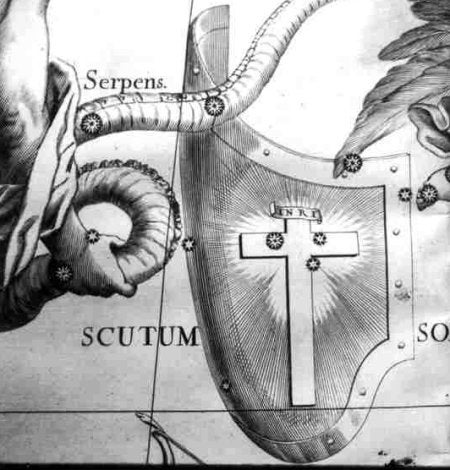Scutum is drawn among the faint stars found just south of Aquila and represents the shield of John Sobieski, a pivotal figure in 17th-century Poland. The country’s nobility crowned Sobieski King John III after he successfully resisted the Turkish advance during the Battle of Vienna in September 1683.
American astronomer Edward Emerson Barnard was the first to research dark nebulae. His catalog, Photographic Atlas of Selected Regions of the Milky Way, contains about 350 entries. Yerkes Observatory — where Barnard made many of his discoveries — published the catalog posthumously in 1923.
Today, we often refer to dark nebulae by their “B,” or “Barnard” catalog number in much the same way as we talk about the Orion Nebula as M42. The most obvious dark nebulae in Scutum are B111 and B119a. You can spot both to the north-northeast of M11. They appear as large, kidney-shape patches that almost touch each other at their southern tips. B111 forms the northeastern edge of the Scutum Star Cloud and appears many times larger than B119a in photographs. Look for a “peninsula” of about half a dozen 8th- to 10th-magnitude stars wedged between the nebulae, as well as an L-shape asterism of stars just north of B119a. The center star of that asterism looks orangish through binoculars.
B318, a long, very thin dark cloud stretches east-west. Look for it just to the south of M11. Farther south you can find B112, a small, egg-shape dark nebula measuring about 20′ across. For scale, the Full Moon measures 30′ across.










